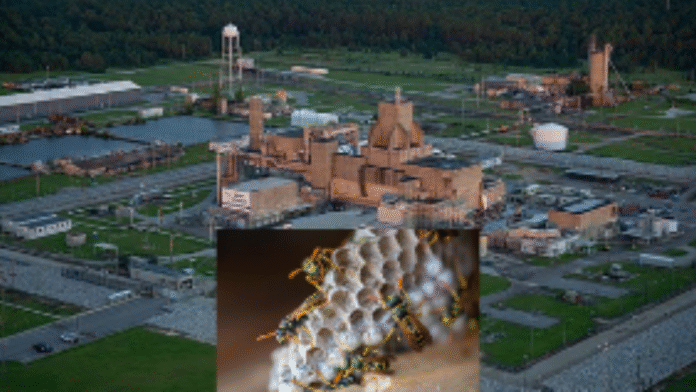Key Point Summary – Radiation Panic
- Workers found four radioactive wasp nests at Savannah River Site in South Carolina
- First nest emitted radiation 10 times over federal safety limit
- DOE says no leakage from nearby nuclear waste tanks
- Scientists warn contamination may be more widespread than believed
- Watchdog group demands answers on contamination source and risks
Alarming Discovery In South Carolina
Workers at the Savannah River Site near Aiken, South Carolina, discovered a fourth radioactive wasp nest this month. They found the first on July 3, with radiation readings ten times the federal safety limit. Built in the 1950s, the facility once produced plutonium and tritium for Cold War nuclear weapons.
The Department of Energy says teams sprayed the nests, sealed them in protective bags, and moved them to disposal as radioactive waste. Officials insist nearby underground tanks, each holding up to 1.3 million gallons of nuclear waste, have not leaked.
Experts Warn Of Hidden Threats
Biologist Dr. Timothy Mousseau from the University of South Carolina says the Radiation Panic is justified. He believes the contaminated nests point to radioactive material spreading beyond known clean-up zones. He calls the find a “red flag” and urges more aggressive investigation.
Savannah River Mission Completion, the contractor in charge of cleanup, says wasps usually travel less than 200 yards from their nests. The insects likely picked up particles from “legacy contamination” — leftover radioactive material from decades-old operations.
Massive Tanks And Lingering Risks
All four nests appeared in the F-Area Tank Farm, deep inside the site’s boundary. The farm holds 22 giant underground tanks, each up to 100 feet wide and filled with hazardous sludge. While officials claim the nests’ radiation levels were less than one percent of natural background exposure, the statement has not eased concerns.
Watchdogs Demand Transparency
Tom Clements of the Savannah River Site Watch says the Radiation Panic will continue until the DOE fully explains the contamination source. He accuses the agency of avoiding questions about possible leaks. “I’m as mad as a hornet,” Clements said, pressing for a public investigation.
The DOE insists there’s no threat to workers or surrounding communities. Yet without clearer answers, critics say the danger may be buzzing just under the surface.




